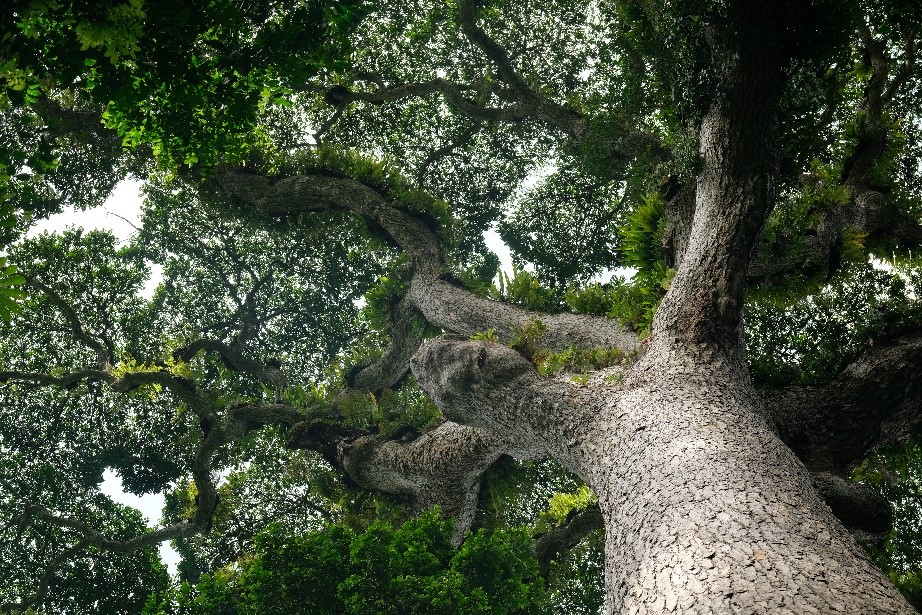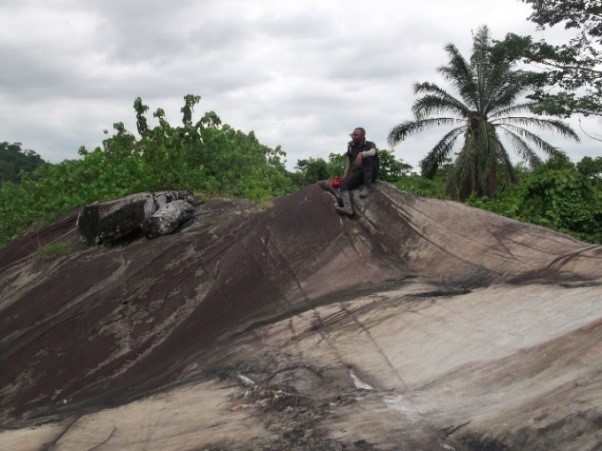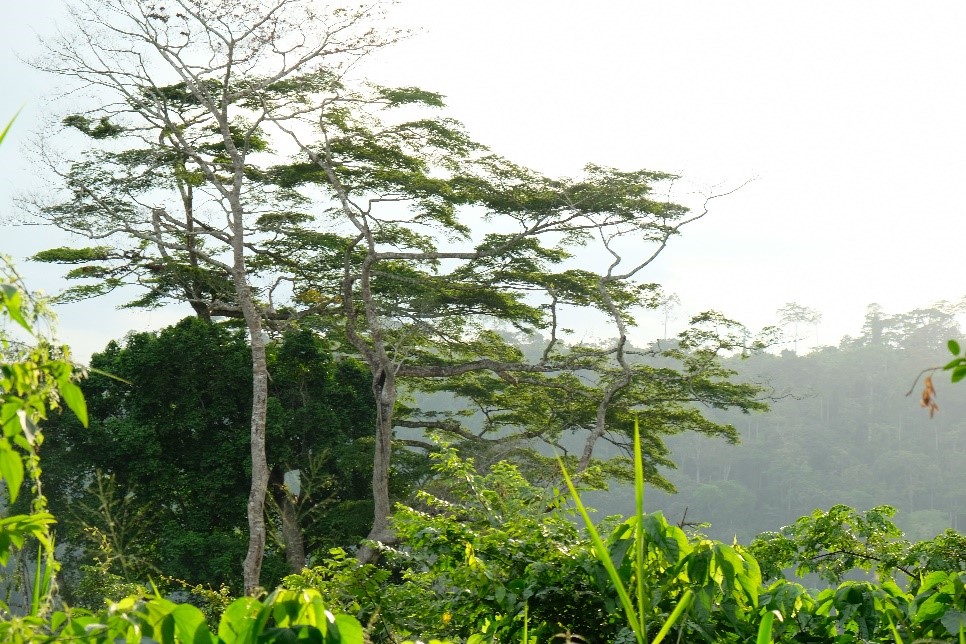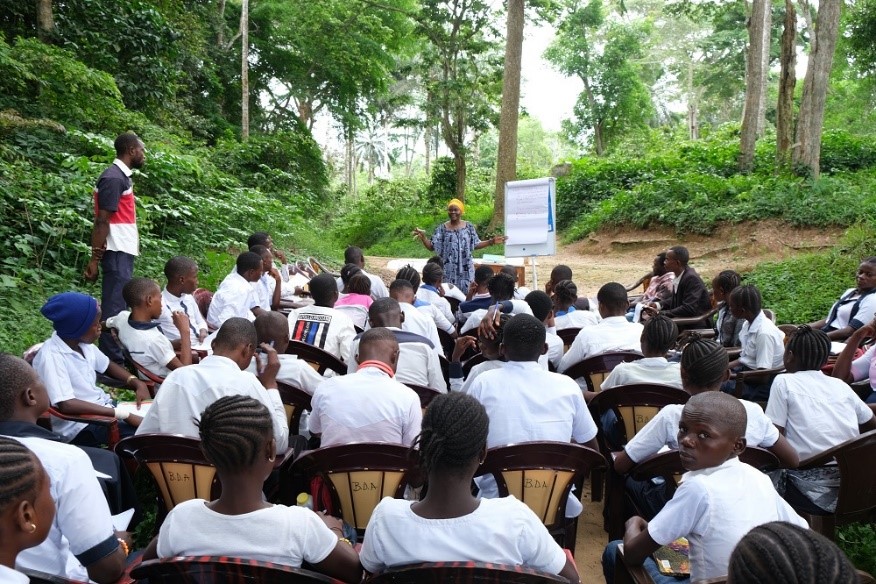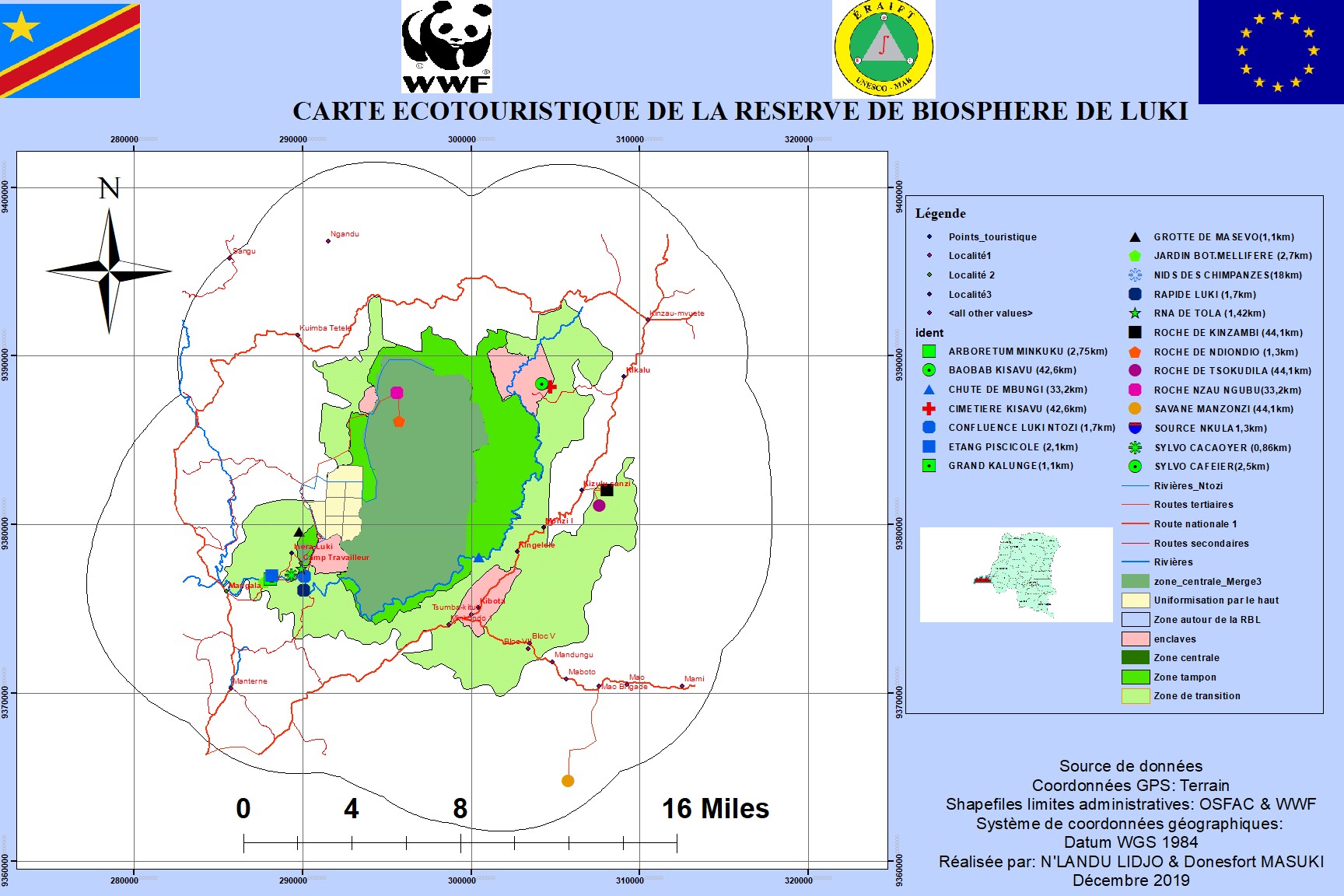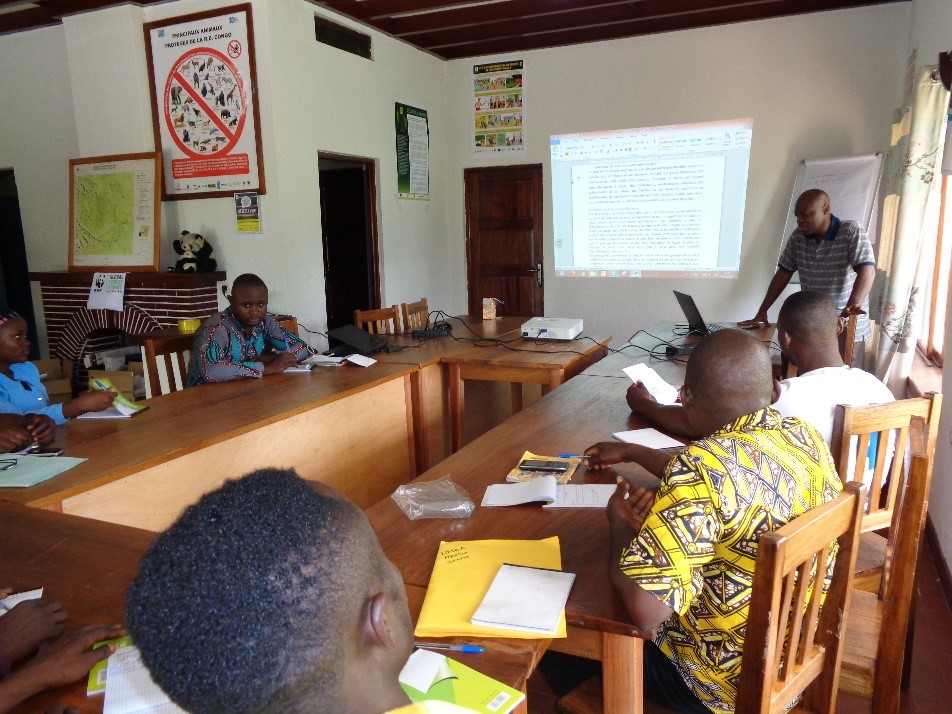LUKI Biosphere Reserve
1. Location and geographical situation
The Luki Biosphere Reserve is located in the west of the Democratic Republic of Congo, southeast of Mayombe, in the province of Kongo-Central
It has an area of 33,000 ha, and extends over latitudes 5°30'-5°45'S, and longitudes 13°7'-13°45'E.
The Luki Biosphere Reserve is located approximately 120 km east of the Atlantic coast and 30 km north of the port city of Boma and 125 km from the city of Matadi. It extends over three (3) administrative zones: Seke-Banza, Lukula and Moanda - Bas-Fleuve district
2. Means of access to the Luki Biosphere Reserve
Road: national axis Boma-Matadi-Kinshasa
Air: Boma and Matadi airports
River: ports of Boma and Matadi
3. History
The Luki Reserve was created in 1937 by Ordinance No. 5/Agri of January 12, 1937. Under this ordinance, the reserve was a state-owned wooded area whose management was entrusted to INEAC (Institut National pour l'Etude Agronomique du Congo Belge), which is now INERA (Institut National pour les Etudes et Recherches Agronomiques).
Management was methodical and based on the zoning of the reserve into experimental plots called "blocks" and on both silvicultural and agricultural considerations. INERA retained management of the reserve even after the creation of the Ministry of Environment, Nature Conservation, Water and Forests (MECNEF) in 1975.
In 1977, the management was transferred to MECNEF, within the framework of the Man and Biosphere (MAB) program, in accordance with the order n°77-022 of February 23, 1977.
In May 1979, the Luki forest estate was recognized by UNESCO as part of the World Network of Biosphere Reserves and its management was transferred from INERA to the MAB Program, a program under the Ministry of Environment, Nature Conservation, Water and Forests.
This program is intended to :
- strengthen the surveillance in the reserve through patrols
- prepare a seed bank for reforestation of the reserve
- study the methods of domestication of animals and conduct studies on plants
This project, financed by UNESCO, also works to raise awareness among farmers in order to safeguard the integrity of the reserve.
Since January 2007, a steering committee has been set up to program and manage the Reserve's activities. It is chaired by INERA and under the vice-presidency of MAB.
4. The physical environment
The relief of Luki Biosphere Reserve is generally made up of hills, high or low valleys and permanent or temporary rivers. The climate is humid tropical (AW5 according to Köppen's classification), marked by two seasons: a seven-month rainy season (mid-October to mid-May) and a five-month dry season (mid-May to mid-October). The dry season is interrupted by light rains and mitigated by frequent fog.
The main soil types according to Lubini (1984):
- Red soils, developed on gneiss, in the western part of the reserve
- purplish red soils, developed on amphibolites
- yellow soils on gneiss and quartzites: in the west and south of the reserve
- alluvial soils, developed on recent alluvial deposits, in the valley of the Luki
The Luki River, into which several tributaries flow, crosses the Luki forest estate in a northeast-southwest direction in a large curve.
The Luki Biosphere Reserve constitutes the extreme southern tip of the Guinean-Congolese massif. Its vegetation is a dense dry semi-caducified forest whose floristic inventories reveal the existence of 1,050 species (INERA, 2019).
In the Luki Biosphere Reserve, there are 26 species of fauna, 17 of which are flagship species that appear in the Congo Basin Ecoregion and on the list of protected species of the Democratic Republic of Congo.
These are the black-banded duiker (Cephalophus dorsalis), the black-fronted duiker (Cephalophus nigrifons), the blue duiker (Cephalophus monticola), the harnessed guib (Tragelaphus scriptus), the red-legged squirrel (Funisiurus pyrrhopus leonis), the large stanger squirrel (Protoxerus stangeri), the African atherur (Artherurus africanus), the giant Emin's rat (Cricetomys eminii), the aulacode (Thynomys swinderianus), the long-tailed mongoose (Herpestes naso), the long-tailed pangolin (Manis tetradactyla), Bosman's potto (Perodictus potto), the chimpanzee (Pantroglodytes verus), the blue pheasant (Corythaeola cristata), the nandinia (Nandinia binotata), the whistling hornbill (Bycanistes fistulata), the crested kingfisher (Alcedo cristata), the pygmy kingfisher (Ceyx picta).
5. ERAIFT activities in the Luki Biosphere Reserve

ERAIFT has been involved in the Luki Biosphere Reserve (LBR) for several years. Since the beginning of 2019, it has been carrying out actions there in synergy with the World Wide Fund for Nature (WWF) under the financial support of the European Union (EU). It is also present in the Yangambi Biosphere Reserve where it is in charge of the scientific coordination of the project "Yangambi, a scientific pole at the service of man and the forests or YPS". In the Luki Biosphere Reserve, in the framework of the partnership with WWF, ERAIFT is implementing the following actions
Training of students, INERA staff and WWF in remote sensing
The Luki Biosphere Reserve is a training ground for ERAIFT students.
In addition, ERAIFT conducts specific training on various topics such as solutions based on ecosystem approaches and greenhouse gas reduction mechanisms, land use planning, remote sensing and GIS, agricultural value chain analysis, etc.
The targets of these trainings are mainly local communities (Rural Agricultural Management Council (CARG), Local Development Committees (CLD)), local and international NGOs, public administration, students of national and regional universities and schools for aspects due to mesological education.
Environmental education workshop in Luki
Training is also provided to students through Nature Friends Clubs (NFCs), which have been set up in secondary schools in the villages of the region around the Luki Biosphere Reserve.
Within these NACs, students are encouraged to adopt responsible actions in their daily lives with respect to nature and in particular with respect to the resources of the Luki Biosphere Reserve.
The themes addressed in the training sessions are: the role of the tree, reforestation, agroforestry, agricultural sedentarization, climate, water, soil, and economic alternatives in the Luki environment.
Depending on the resources available (land, water), the CANs set up school gardens and agroforestry fields, school nurseries and do breeding and awareness raising.
Research and development
Within the framework of the synergy with WWF, ERAIFT is setting up a library, rehabilitating the forestry and wood study laboratory, rehabilitating the herbarium, working on the capitalization of research work, solar electrification and the connection of the research center to drinking water.
ERAIFT guarantees free access to Congolese and international researchers to the research conducted in the RBL since its creation.
The current research of ERAIFT in the RBL focuses on the diagnosis of agrarian and land tenure systems in the villages around the RBL, research on honey plants (conducted in partnership with ULB-Cooperation) and other non-timber forest products (caterpillars, mushrooms), multi-resource inventories in regenerated forests, monitoring of the dynamics of fauna, particularly chimpanzees, consumption of wood energy, development of regenerated forests, monitoring of bush fires, endogenous agroecological practices in the face of climate change and accounting for forest carbon.
The results of these researches are put at the service of local communities.
This is done through the diversification and development of the RBL's ecotourism package. ERAIFT, in partnership with WWF, trains ecotourist guides, maps the ecotourism potential of the LBR, improves the reception of visitors and supports the customization of ecotourism activities.
The management body of the LBR, called the Steering Committee, is made up of the Institut National d'Etudes et de Recherches Agronomiques (INERA) of the Congolese Ministry of Scientific Research and Technological Innovation; the MAB program of the Ministry of the Environment and Sustainable Development (MEDD); a representative of the traditional chiefs; a representative of the provincial administration; and a representative of the local civil society ERAIFT provides the Steering Committee with support for the continuous monitoring of the RBL, sensitization and training in the villages, the organization and holding of meetings, and the diagnosis of priorities for the management of the RBL
Ernestine LONPI TIPI, PhD student, ERAIFT- LUKI Biosphere Reserve



